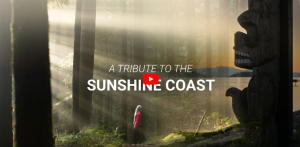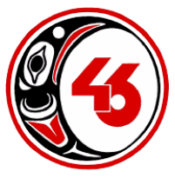Family & Community Engagement
- Home
- Families & Students
- Family & Community Engagement
Resources and Supports
Family & Community Engagement
This communication protocol provides a framework for finding solutions to differences that arise between students, staff, families, and caregivers throughout the school district. Confidentiality will be maintained throughout the process. If a student initiates the resolution process, an adult may be present at any stage of the process.
If you need assistance, please contact the Office of the Superintendent at 604-886-4489 or questions@sd46.bc.ca.
How to Communicate with Us – Guidelines for Resolving Problems or Concerns:
Step 1: Try to resolve the issue at the source.
- Identify the specific problem (list specific examples that illustrate the problem).
- Make an appointment to see the person with whom you have a concern, one-on-one.
- Respectfully express your concern.
- Ensure mutual understanding of the concern.
- Together, explore solutions.
- Together, set up an action plan with times, dates and follow-ups.
- If a resolution cannot be reached, inform the other party and move to the next step.
Step 2: Principals
- Make an appointment with your child’s Principal.
- Identify the concern and establish what has been done to reach a solution.
- The Principal will help explore further options to resolve the concern.
- Together, set up an action plan with times, dates and follow-ups.
- If a resolution cannot be reached, move to the next step.
Step 3: Director of Instruction/Assistant Superintendent and Superintendent of Schools
- Contact the Superintendent’s Office. Identify the concern and what you have done to resolve it. This should be done within 30 days after the decision from Step 2 was made.
- The Director of Instruction or Assistant Superintendent will connect with you regarding your concern.
- If you are not satisfied with the outcome, inform the Director of Instruction or Assistant Superintendent and contact the Superintendent of Schools.
- If you are not satisfied with that outcome, inform the Superintendent, and move to the next step.
Step 4: The Board of Education
- To connect with the Board of Education, please contact the Secretary-Treasurer’s Office to file your appeal within 15 school days.
- Once a meeting date with the Board of Education has been set, you will be notified and invited to attend. You will have an opportunity to explain your position.
- You will be notified, in writing, within 45 days of the Board of Education’s decision.
- Certain decisions of the Board of Education may be appealed under Section 11.1 of the School Act.
Step 5: Superintendent of Appeals Section 11.1 of the School Act.
- The School Act states that either a student or a parent/ guardian of a student can appeal a decision of a Board of Education.
- Not all decisions made by a Board of Education can be appealed to a Superintendent of Appeals, under Section 11.1 of the School Act. The decision must have been made by an employee of a Board of Education and significantly affect the education, health or safety of a student and fall within the allowable grounds.
- Refer to the Ministry of Education and Child Care’s Student Disputes & Appeals to check the allowable grounds and to obtain a provincial Notice of Appeal form.
- Submit the Notice of Appeal form and a copy of the Board of Education decision, within 30 days after receiving the decision of the Board of Education, to the Office of the Registrar, Student Appeal Branch.
School Trustees are also available, as your elected representatives, to guide you in this process.
See Regulation 1162 – How to Communicate With Us – Guidelines for Resolving Problems or Concerns for Students, Parents and Caregivers for complete details.
SD46 FOI Brochure | FOI Access Request Form
What is the Freedom of Information and Protection of Privacy Act?
The Freedom of Information and Protection of Privacy Act is a law that came into effect in British Columbia in 1993. The Act provides individuals with specific information and privacy rights with regards to information that is collected or controlled by public bodies in British Columbia.
What are my information and privacy rights under the Act?
You have two major rights under the Freedom of Information and Protection of Privacy Act:
• the right of access to records in the custody or under the control of a public body, including your own personal information, and;
• the right of protection of the privacy of your personal information in the custody or under the control of a public body.
You also have several related rights, such as the right to request correction of your personal information if you think it is inaccurate, and the right to ask the Information and Privacy Commissioner to investigate if you think your rights are not being upheld.
What are “public bodies?”
Public bodies include most provincial government, local government, and self-governing professional bodies in British Columbia. They are ministries, agencies, boards, and crown corporations; hospitals, municipalities, regional districts, municipal police, school districts, universities, and colleges; and numerous professional bodies, such as the British Columbia College of Teachers, the College of Physicians and Surgeons, and the Law Society of British Columbia. The Act does not apply to private businesses or associations.
What is “personal information?”
Personal information is any recorded information that uniquely identifies you, such as your name, address, telephone number, age, sex, race, religion, sexual orientation, disability, fingerprints, or blood type. It also includes your health care, educational, financial, criminal, or employment history and anyone else’s opinions about you or your own views or opinions.
Are there any exceptions to my information and privacy rights under the Act?
Yes. If you are requesting records from a public body, you will not get access to Cabinet confidences, someone else’s personal information, or information that could harm another individual’s business interests. You also will not generally get access to records that could harm law enforcement, the economic or financial interests of a public body, other individuals, or the public Further, although you can expect a public body to protect the privacy of your personal information, it has the authority to release your information to others in certain circumstances, such as for law enforcement or to protect someone else’s health or safety.
How do I exercise my rights?
If you want access to records in the custody or under the control of a public body, you may request them directly from the public body. If you are concerned about a public body’s protection of the privacy of your personal information, you should contact them directly to share your concerns. If you are dissatisfied with how a public body responds to your request or your concerns, you have the right to ask the Information and Privacy Commissioner to investigate.
Requesting Records How do I request records from the School District?
Write to the FOI Officer of School District 46 or complete a “Request Form” at the school board office. Describe the records as clearly and completely as possible and request access to them. Normally, a public body must respond to your request within 30 days. If a public body needs additional time to respond, it must tell you so and explain why. It also must tell you when you can expect its full response. You have the right to request a review of a public body’s extension of time to the Information and Privacy Commissioner.
What kind of response can I expect?
If the school district does not have the records you requested, it will tell you and may transfer or refer your request to the public body that does. If the school district does have the records you requested, it may release all or parts of them to you. If the school district refuses to release all or parts of records to you, it must tell you why. It also must tell you that you have the right to request a review of its decision by the Information and Privacy Commissioner within 30 days.
Does it cost money to request records?
The school district cannot charge you for access to your own personal information. It may, however, charge you for access to non-personal information if it takes more than three hours to find or prepare the records for release. It also may charge you for the cost of copying and sending records to you. If the school district intends to charge a fee for records, it must first give you a fee estimate. You have the right to ask the Information and Privacy Commissioner to review a decision to require a fee.
Fees for Access Requests
Section 75 of the Freedom of Information and Protection of Privacy Act permits the school district to assess and charge a fee for certain costs associated with responding to access requests.
The Act outlines the maximum fees that can be charged for the following;
- Locating, retrieving and producing the record
- Preparing the record for disclosure
- Shipping and handling the record
- Providing a copy of the record
If fees are determined, the requestor will be notified in writing of any estimated costs in advance of the preparation of records. Many records are available on the district website without the need for a formal request.
Requesting a Review
What is a request for review?
A request for review is an appeal to the Information and Privacy Commissioner about a public body’s decision about records. Under the Freedom of Information and Protection of Privacy Act, the Commissioner may review any decision, act, or failure to act of a public body relating to a request for records. This includes decisions about the release of records, corrections to records, time extensions, and fees.
How do I request a review?
Write to the Commissioner’s Office within 30 days of receiving a public body’s written decision about records and ask the Commissioner to review it. Attach a copy of your original request to the public body and a copy of the public body’s response to you.
Office of the Information and Privacy
Commissioner for British Columbia
4th Floor, 947 Fort Street
PO Box 9038 Stn. Prov. Govt.
Victoria, British Columbia V8W 9A4
Telephone: (250) 387-5629
Website: www.oipc.bc.ca
For more information on the Protection of Privacy and the Act in School District 46 – Sunshine Coast contact:
Freedom of Information Officer
School District 46 – Sunshine Coast
494 South Fletcher Rd, PO Box 220
Gibsons, BC V0N 1V0
T: (604) 886-8811
F: (604) 886-4652
Studies show that family involvement in their child’s learning is closely related to child success in school.
Ways to Engage:
- Read with your child.
- Talk to your child about their day and experience at school.
- Let’s Play! Activities Booklet for Families: These are activities for children and caregivers to play and learn together.
- Help on school field trips. Talk to your child’s school office Admin Assistant about completing your Volunteer Driver Application. It is a simple process!
- Volunteer in the classroom. Speak to the Principal about reading programs or sharing your skills/expertise.
- School Career Days: Talk with students about your job.
- Help with school special events, Sports Day, and concerts.
- Work on school fundraising projects.
- Join the school’s PAC or DPAC!
Tips for Parents: Parent Involvement that Makes a Difference
Parent-Teacher Interviews Tip Sheet for Parents
To connect with your child’s teacher, visit your child’s school website for contact information.
Supporting Students’ Academic and Social Transition
The purpose of Grade 7/8 transition is to provide Grade 6/7 students with a variety of experiences to connect them to their secondary school before they begin Grade 7/8.
This connection focuses on the development of plans to support the course selection process, and determine any additional supports that may be required for individual students. Additional supports may address both academic and social/emotional needs. More importantly, transition supports every elementary student to feel a sense of welcome, belonging, and excitement about entering secondary school.
Transition Activities and Timeline
The Transition process begins in the fall of Grade 6/7 and continues into the fall of Grade 7/8. Many processes and activities occur during this transition time frame. Activities may include visits to secondary schools, social events, tours, Grade 6/7 partnerships with older students, and Grade 6/7 sporting events hosted at the secondary school.
Events for students will vary from school to school, but will include a tour of the school (June), a course selection meeting with the high school staff (May), introduction of the principal, vice-principal and grade 7/8 counsellor (May), start of school welcoming events (September) and may include invitations to watch sports events, attend special transition events such as a school day at the secondary school (June), locker day (August), or community events at the high school.
For transition information for your grade 6/7 student, please also feel free to contact your current grade 6/7 teacher or principal at your child’s elementary school.
Family of Schools
- Generally, grade 6/7 students transition to the secondary school within their Family of Schools.
- Chatelech Secondary: Halfmoon Bay Elementary, West Sechelt Elementary, Kinnikinnick Elementary, Davis Bay Elementary, Ecole Pacifique and Roberts Creek Elementary – (also under Elphinstone Secondary)(RCE students must submit a cross boundary request for CSS)
- Elphinstone Secondary: Langdale Elementary, Gibsons Elementary, Cedar Grove Elementary, Roberts Creek Elementary
- Pender Harbour Secondary: Madeira Park Elementary, and Halfmoon Bay Elementary (also under Chatelech Secondary)
- For more on our secondary alternative school, please visit Sunshine Coast Alternative School (SCAS)
Grade 6/7 Parent/Caregiver Information Opportunities
- SPARK! to Secondary Evening Sessions (April to May)
- Secondary School PAC’s Family of Schools Tour and Information Evening (April / May)
- Parent Night hosted by the secondary school. An opportunity to meet the principal, vice-principal, PAC, counsellor(s), Inclusive Support Team, Indigenous Learning Team for an evening of Q&A. (June)
Download your Secondary School App Now!
- Chatelech Secondary: Find “Chatelech 2 Go” in the Apple App Store or get it on Google Play
- Elphinstone Secondary: Find “Elphinstone” in the Apple App Store or get it on Google Play
- Pender Harbour Secondary: Find “My PHSS” in the Apple App Store or get it on Google Play
- Sunshine Coast Alternative School: Find “My SCAS” in the Apple App Store or get it on Google Play
Parent/Caregiver Resources for a Smooth Transition
Ever wondered, ‘How am I supposed to help my child with their numeracy homework when I don’t know the skills myself?’ Or thought, ‘I wish I had ideas to support my child’s literacy throughout their education’. Then visit SurreySchoolsOne! Surrey Schools has created a website full of resources, ideas, and video guides for parents in BC.
Interested in knowing more about the BC Curriculum? Asking yourself ‘What are the Core Competencies’? ‘What does my child learn at each grade level’? Visit the BC Ministry’s New Curriculum website for answers to all these questions (click on Core Competencies – Curriculum).
WorkBC has launched a Career Search Tool that allows students to explore up to 500 career opportunities by occupational interest, education, region, industry, occupational category, annual salary and job type. A Career Resources for Parents section has also been added to the WorkBC website.
BC’s Training & Education Savings Grant Information: Families in British Columbia are encouraged to start planning and saving early for their children’s post-secondary education or training programs. To help, the B.C. Government will contribute $1,200 to eligible children through the B.C. Training and Education Savings Grant (BCTESG).
Canadian Learning Bond: The Canada Learning Bond (CLB) is money (up to $2,000) that the Government adds to a Registered Education Savings Plan (RESP) for children from low-income families. Eligible Canadians can apply for the CLB with their financial service provider by opening an RESP and requesting the Bond. Those who already have an RESP are encouraged to check with their financial service provider to see if they may be eligible for the CLB.
Sunshine Coast Community Schools are committed to supporting and improving student learning and to strengthening individuals, families, and vibrant, healthy communities by providing quality programs, lifelong learning opportunities, and connections to school and community resources.
The Community Schools secure grants and external funding to provide valuable programs, services and activities in and out of school time to address nutritional, physical, social and emotional well-being. Community Schools enhance the work of both School District 46 and our communities by offering site-specific community-based programs as well as regional programs that benefit the entire Sunshine Coast.
Community School Coordinator Contact Information:
- Sechelt Community Schools (Davis Bay/Kinnikinnick/West Sechelt) | Ted Chisholm
- Gibsons Community School (Gibsons/ Elphinstone/ Langdale | Sue Wilson
- Chatelech Community School | Lia Lindhagen
- Halfmoon Bay Community School | Wendy White
- Pender Community School (Madeira Park/ Pender Harbour) | Cheyenne Howitt
- Roberts Creek Community School (Roberts Creek/ Cedar Grove) | Alexis Bach
A Tribute to the Sunshine Coast
The Gibsons & District Public Library (GDPL) is ready to support you. They have databases for research, learning a new language, learning to read, and for your next science project. They have ebooks and audiobooks for every reading level. With a GDPL library card you have access to all the library has to offer.
- Listen and watch animated storybooks with TumbleBooks
- Compare countries, learn about animals and browse popular topics with World Book Kids
- Enjoy unlimited streaming access to film, television, and educational resources with Kanopy Kids
- Learn a new language with Mango
- Find full-text, peer-reviewed articles for your research with EBSCOHost
Access a world of eBooks and audiobooks through the library catalogue. If you can’t find an eBook or audiobook you want, or are having to wait – let them know and they will do their best to get you a copy. Their doors are open Monday to Saturday 10:00 – 5:00 pm and their databases are 24/7!

The Restorative Justice Program of the Sunshine Coast is currently run by a volunteer board of directors comprised of representatives from the RCMP, School District 46 and the wider community. The program aims to provide alternative methods to the traditional court system by highlighting the use and importance of restorative justice practices. The goal of this program is to maximize social justice for victims, offenders and the community and to minimize further harm caused by the offending behaviour. The Restorative Justice Program of the Sunshine Coast welcomes all individuals during any stage of the criminal justice process.

The NSMEC is a community aquarium operating under a collect-hold-release model and operates in the Gibsons Public Market. The NSMEC offers a combination of experiential and classroom learning opportunities for school age children. Many of their programs have been designed to meet science curriculum outcomes at many grade levels. Their programs are inquiry based and align strongly with core competencies. Our NSMEC partners also deliver the following programming throughout our district: the Grade 3 Biodiversity of the Salish Sea Program, the Grade 6 Human Impacts on the Salish Sea Program and the long running Salmon in the Classroom Program.
Through the generous support of the United Way British Columbia and in partnership with the Roberts Creek Community School Association, and community schools across the coast, we are able to offer the School’s Out and Future Leaders programs. The School’s Out program is designed to support a smooth transition to secondary school. In the spring before transitioning to secondary, Grade 6 or 7 students in every elementary school are invited to sign up for a 6 week after school sports or arts series held once a week in their local secondary school. Students are able to become familiar with the school buildings and the secondary teachers and administrators. They are able to learn about school routines, have their questions answered, and have fun with friends. The Future Leaders program supports senior secondary students to work in the School’s Out program, providing peer mentorship and support. With this support, students are able to enter their new secondary school feeling connected to the building, the teachers, principals and some of the older student ‘buddies’.




